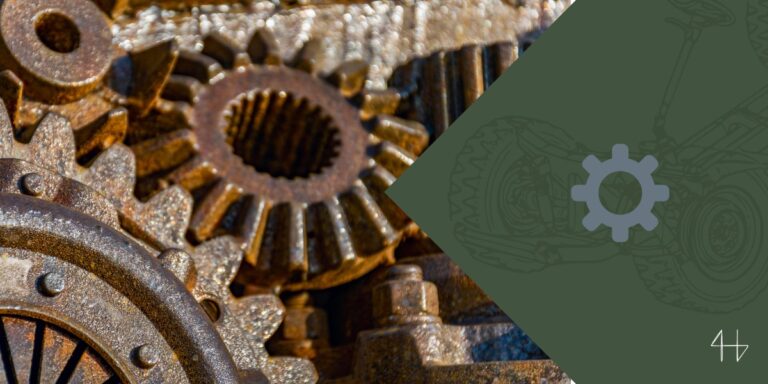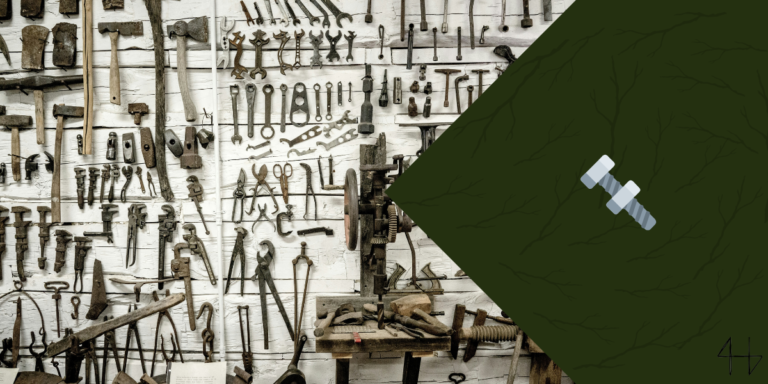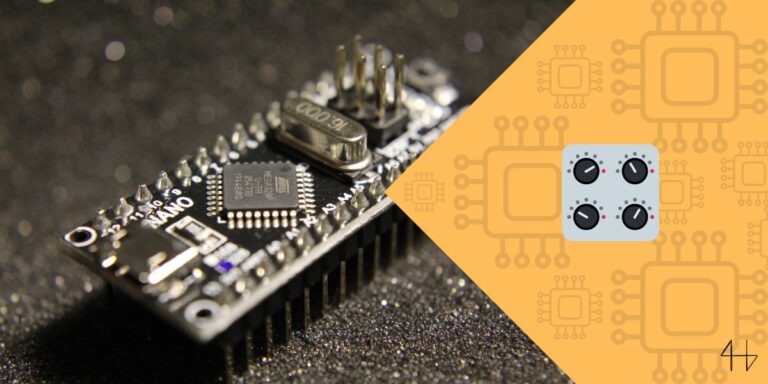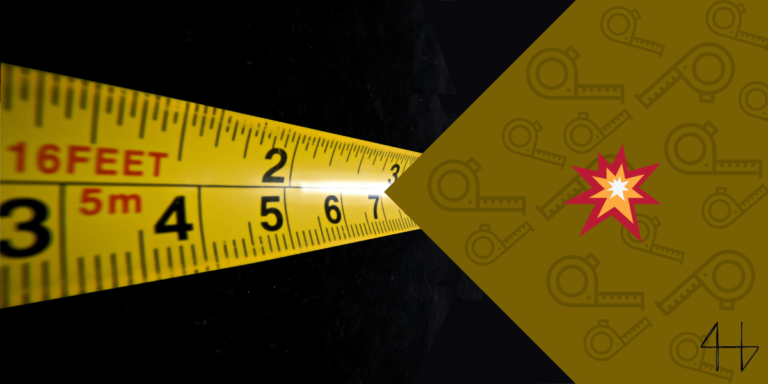Gears are all around us, from our watches to our car engines. But understanding the gear train principles, and how gears rotate and interact isn’t just nice to know – it’s necessary for every engineer and designer.
Many engineers and designers struggle with gear train design and end up with inefficiencies or even failures in their projects.
This leads to products that don’t survive very long.
What are Gear Train Principles?
Gear train principles are the fundamental concepts that govern how gears interact to transmit motion and power in a mechanical system.
You should always keep them in mind when designing gear trains.
As a result, your systems will run smoothly, and effectively, and last longer than before.
Why do you need to know gear train principles?
Understanding gear train principles is important because even the smallest mistake in design can lead to big problems down the line.
When you’re working with gear systems you’re not just dealing with one gear in isolation.
Each gear, whether it’s a spur gear or helical gear, interacts with others to transmit motion and force. This interaction determines how your whole system performs.
For example, if you get the relationship between gear wheels wrong you might end up with a mechanism that doesn’t achieve the desired rotational speed or torque. Helical gears introduce additional complexities like axial loads that need to be considered to avoid wear or system inefficiency.
Knowing these principles ensures your designs are not only functional but also reliable and long-lasting.
The Poor Gear Design
Once after a long day, I want to relax. But I am greeted by ankle-high water
I hear a loud grinding sound from the bathroom. As I get closer, an electric buzzing becomes apparent. Switching off the power stops the noise. I open the bathroom door to find the culprit.
I am never buying a cheap washing machine again.
The 6 Princples to Keep in Mind
To help you with that here are 6 principles to keep in mind when working with gear trains.
Gear Ratio
Gear ratio is important because it helps you determine the rotational speed & torque of the output shaft.
The gear ratio which is determined by dividing the number of teeth on the driven gear by the number of teeth on the drive gear determines the speed and torque of your system.

For example, with a 4:1 gear ratio, the driven gear will rotate at a quarter of the speed of the drive gear but with 4 times the torque. This ratio means if one gear is rotating at a certain speed the other won’t rotate at the same speed unless they have the same number of teeth.
Torque and Speed Relationship
The basic principle is simple: the torque ratio is directly proportional to the gear ratio.
Torque and speed are inversely proportional.
If the output gear has more teeth than the input gear the gear train increases the input torque and reduces the rotational speed.
This is ideal for applications where you need high torque at the output shaft like forklifts, cranes, and tractors.
If the output gear has fewer teeth the gear train reduces the input torque and increases the speed which is useful for applications where you need higher rotational speeds like drills, motorcycles, and CNC machines.
Balancing these factors ensures your system delivers the right amount of torque and speed to the output shaft and optimizes performance for your application.
Types of gear trains
There are 4 types of gear trains:
- Simple gear train
- Compound gear train
- Epicyclic gear train (planetary gear train)
- Reverted gear train
Most real-world applications are a mix of 2 or more types of gear trains.
A simple gear train is 2 or more gears connected in series, used for simple applications.
When you need more control over speed and torque a compound gear train comes into play. Multiple gears on the same shaft give you more flexibility. You can look at it as gears connected in parallel when you compare it to a simple gear train.
In more complex systems planetary gear trains are used where planet gears orbit around a central sun gear, high torque density, and different input and output shaft alignments.
Lastly, the reverted gear train is similar to a compound train but the input and output shafts are on the same axis, ideal for space-constrained applications.
Knowing these helps you choose the right setup for motion transmission.
Gear Meshing
When multiple gears are involved in a system gear meshing becomes a key factor. Each gear rotates based on how its teeth engage with others and this engagement must be precise for smooth operation.
If the gears aren’t aligned or the teeth aren’t shaped correctly your gear system will suffer from inefficiencies like friction, noise, vibrations, and even premature wear.
These will reduce the life of the system and compromise its ability to transmit power.
By making sure gears mesh properly you enhance performance and maintain the durability and reliability of your design over time.
Mechanical Advantage
Mechanical advantage is a fundamental concept in gear mechanism design, it determines how much a gear train can amplify force or speed.
In gear systems when two gears mesh the gear with more teeth turns slower but with more torque and the one with fewer teeth turns faster but with less torque.
This ratio of teeth (gear ratio) gives us the mechanical advantage.
By understanding and applying this principle you can design gear systems that either maximize torque for heavy loads or increase speed for fast movement depending on your application.
Hunting and Non-Hunting Gear Sets
Non-hunting gear ratio, every tooth on one gear will contract the corresponding gear’s tooth every time. This is when there is a gear ratio of 1:2 for example. Every tooth will only have 2 spots in the corresponding gear.
This leads to quick wear and tear.
In a hunting gear set the two gears have tooth counts that are relatively prime, meaning their teeth will mesh in every possible combination as they rotate.
This will distribute the wear evenly across all the teeth and extend the life of both the driver gear and the driven gear.
Takeaway: hunting gear ratios wear out gear teeth less than non-hunting gears.
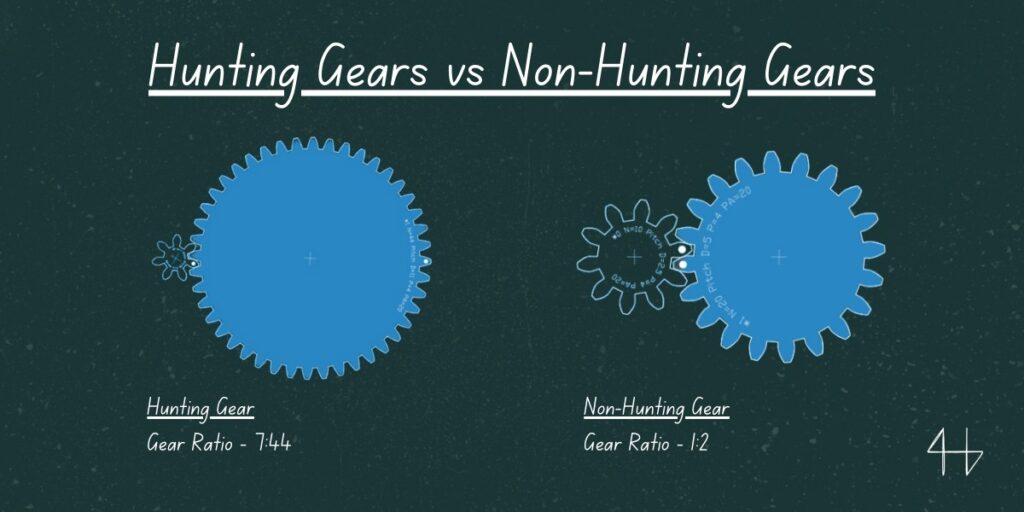
Conclusion
Learning about gear principles is not just an academic exercise – it’s key to building efficient and reliable mechanical systems.
By understanding how these basic principles affect performance, you can avoid common mistakes and optimize your designs.
With these principles in hand, you’re ready to take on your next gear train project with confidence.
FAQs

What are the principles of a gearbox?
The principle of a gearbox is understanding how gears transmit motion and torque between shafts and change speed and direction.
Key principles are selecting the right gear ratios, proper gear meshing, and accounting for gear types like spur or helical to achieve desired performance and efficiency in mechanical systems.
What are the principles of gears?
The principles of gears are in understanding how gears interact with each other and transmit motion and force.
Key points are:
- Gear ratios
- Relationship between torque and speed
- Types of gear trains
- Gear meshing
- Mechanics advantage
- Hunting and non-hunting gear sets
What are the 4 types of gear trains?
- Simple Gear Trains: A series of gears connected in a line.
- Compound Gear Trains: Multiple gears on one shaft to achieve higher gear ratios.
- Reverted Gear Trains: Gears that go back to the original axis.
- Epicyclic Gear Trains: Gears that rotate around a central gear, compact and versatile.




